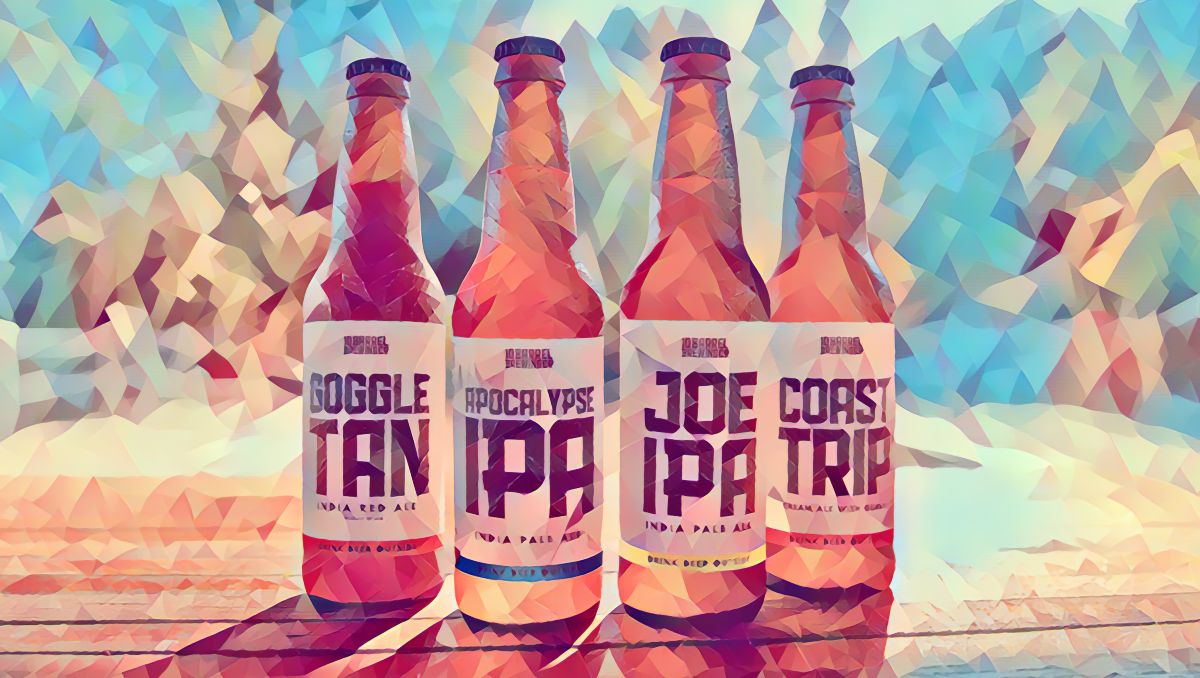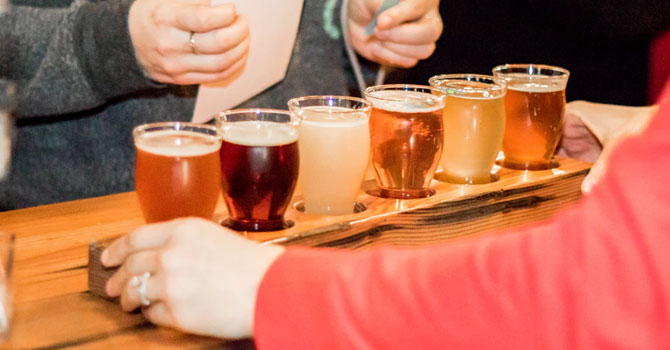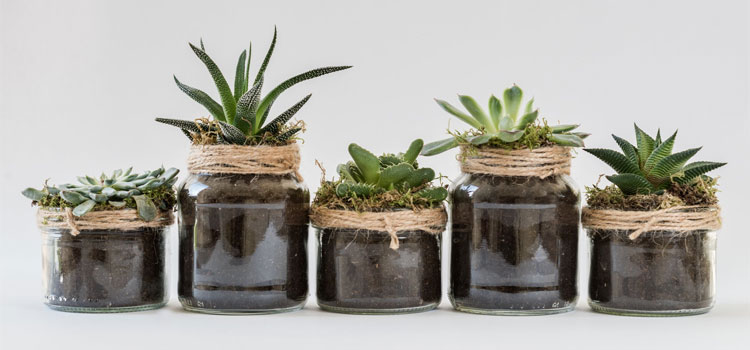Humans have been brewing beer for 10,000 years, and we’re not likely to stop now. If you love drinking beer, you might have wondered about creating your own brew, and possibly even how to start a brewery selling your own creations.
- Inbox Dollars - Get paid to check your email. $5 bonus just for signing up!
- Survey Junkie - The #1 survey site that doesn't suck. Short surveys, high payouts, simply the best.
- Nielsen - Download their app and get paid $50!
Homebrewing a batch of beer is one thing, but starting a brewery for a business is not a simple endeavor. Between sourcing the raw materials, buying the equipment, and navigating the legalities, you have your work cut out for you.
In today’s blog post, I guide you through how to start a brewery: factors to consider, conditions to meet beforehand, and the steps you need to take to build your business.
Factors To Consider When Starting A Brewery
So you’re probably here because you love drinking beer and you’re thinking of turning that love into creating your own brews and even turning it into a business.
Here are some factors to consider when making your decision to start a brewery.
Is a brewery business the right fit for you?
A brewery business can be lucrative, but it takes more than a love of beer to be successful.
Here are some questions to ask yourself before you dive head-first.
- Are you willing to work more than 40 hours a week, including weekends?
- Do you have good sales and marketing skills? If not, are you willing to learn?
- Are you willing to spend most of your day cleaning?
- Can you keep decent financial records and inventory?
- Do you have a lot of money you can afford to invest? If not, are you comfortable looking for sources of funding?
If you said yes to all, then you understand that running a brewery is much, much more than brewing and drinking beer all day.
But if not, I suggest you do plenty of research and soul-searching to really know if running a brewery is for you.
Federal And State Laws
Homebrewing is legal in all 50 states, but only if it’s for personal use (i.e., less than 100 gallons of beer a year). This means you can perfect your brew at home and have family and friends taste-test it, but you can’t sell anything you brewed at home.
The federal authority for all alcoholic beverages is the US Alcohol and Tobacco Tax and Trade Bureau (TTB).
This bureau sets the rules for the production, distribution, labeling, advertising, trade and pricing practices, credit, container characteristics, and alcoholic content of each alcoholic beverage.
Aside from federal laws, you’ll also need to adhere to your individual state laws. Make sure to look them up.
Brewery Location
Because you can’t sell your brews from home, you need to find a space for your brewery that you can rent.
Consider the following when scouting for a location to start your brewery.
- Brewery requirements. At the very least, you’ll need a continuous water source, reliable electricity source, and facilities for drainage and exhaust.
- Zoning laws. Always check with your local government if your prospective location is in a zone where industry is permitted.
- Space. Will your equipment fit (especially height-wise)? Is there room to expand operations (like a tasting room)? Is there enough parking for delivery vehicles and for you and your eventual employees?
- Safety. Stay up-to-date with OSHA requirements, starting with non-slip, easily washable floors and the use of personal protective equipment (PPE). This OSHA resource hub by the Brewers Association is detailed and helpful.
Investment
I can’t and I won’t sugarcoat it: you would need a substantial amount of investment to start a brewery.
And it’s a high-risk investment, too.
As you’ll see in the next sections, you’ll need to have your equipment and facilities set up before you even apply for your license to sell.
No joke. Here are the fastest ways to make easy money online. Click here to see how.
As you know, applying for a license can go either way. If your license is disapproved, you’re out all the costs. Of course, you can always sell the equipment, but that’s probably at a loss.
Don’t have enough capital? Raise funds via crowdfunding, or try to get venture capital funding for your business.
If you still can’t scrape together the funds needed, you can maybe try to apply for one of these small business grants so you can get your business started.
Business objectives
Starting a brewery is not easy and it’s not cheap; having clear business goals and knowing exactly what you want to achieve with your business helps you keep your focus.
Write down your business objectives and keep them with you. In fact, it’s even better if you can integrate this into your business plan.
Ideal customer
Visualize your ideal customer and write up a profile: their income bracket, jobs, likes, dislikes, wants, and needs.
When you have this snapshot of your ideal customer, weigh your brewing skills against their preferences and determine if you have enough skills to give them what they want.
If not, consider your willingness to invest time and money to hone your existing skills and learn new ones.
It all comes down to a single question: what type of person do you want to buy your beer?
Things To Do Before Starting Your Brewery
When you’ve considered all the factors, begin getting your ducks in a row.
Here are the things you have to accomplish before you start your brewery.
Perform Market Research
Market research involves studying customer data and behavior as well as market trends.
The aim is to learn who to sell your beer to, what they’ll like, and how to market your products to them.
Here are some questions to answer so you can get a good sense of the market.
- Demand. Do people want your product? How much do they want it?
- Market size. How large is your audience?
- Economic indicators. What income bracket do they belong to?
- Location. Where are your customers? How wide is your reach?
- Market saturation. What does your competition look like?
- Pricing. How much are your potential customers willing to pay?
Find Your Niche
A craft brewer is defined as a small, independent brewer, and you technically fall under this category.
This is still a broad definition, so let’s break it down further.
According to the Brewers Association, there are six distinct market segments:
You can make money from home and it doesn't have to be challenging. Click here to see how.
- Microbrewery – Less than 15,000 barrels of beer per year; sells 75% or more of beer off-site
- Brewpub – Restaurant-brewery selling 25% or more of its beer on-site with food services
- Taproom Brewery – Selling 25% or more of its beer on-site without food services
- Regional Brewery – Between 15,000 to 6,000,000 barrels
- Contract Brewing Company – Business that hires another brewery to produce beer but takes care of everything else: marketing, sales, and distribution
- Alternating Proprietor – Tenant “rents” brewery and becomes the brewery of record in terms of taxes, label approval, and formula approval
If you’re only starting out, the simplest market segment to start with would be a microbrewery. A taproom brewery can also be worth a try but would require a bigger space to accommodate your customers.
Draw Up Your Business Plan
Once you’ve decided which niche is the right fit for you, create your business plan to lay out your business goals and give you a clear direction for your brewery business.
This article from the US Small Business Administration shows you two ways to write your business plan.
Perfect Your Technique
Planning your business will be all for naught if you only know the bare basics of brewing.
A thriving brewery business has to sell beer, and that means having a high-quality product line that stands out from the rest of the competition.
Perfecting the art of brewing, from choosing the right ingredients to its final presentation, is crucial to your success.
Look for classes you can take to add to your knowledge of brewing.
The oldest and most popular brewing school is Siebel Institute of Technology, which offers a 12-week diploma course in brewing technology, as well as a la carte offerings of courses if you only want to refresh your knowledge in certain subjects.
However, Siebel Institute is located in Chicago, Illinois. If you don’t live near there, or have no plans of relocating to Chicago even for just 3 months, you can check out the courses offered by American Brewers Guild. It’s not 100% online, though; you’re required to work for one week at a local brewery.
If you have a choice, select a course that offers a certificate.
This will give you an advantage when applying for your licenses and permits.
Network With Other Brewers And Suppliers
Connecting with other brewers and suppliers helps you gather more knowledge about brewing, marketing, and distribution, and allows you to learn where to find the best materials and equipment.
A couple of associations you can look into are Brewers Association and American Craft Spirits Association.
The Beverage Trade Network (which you can also join) has a list of brewers association in the USA, but this page was last updated in 2013.
Find Raw Materials
First, familiarize yourself with the raw materials you need:
- Water. Purified water is the best water to use; any impurities may affect the taste of your products.
- Cereal Grains. The preferred grain for beer is barley, although you can use corn, rice, rye, or wheat as well.
- Hops. Hops are the flowers of the hop plant Humulus lupulus..
- Yeast. If you’re making ale, you’ll need to use a strain of Saccharomyces cerevisiae called brewer’s yeast (not to be confused with baker’s yeast).
Look for local suppliers of these raw materials first so you can more easily source them.
You can also look for online suppliers who deal in wholesale purchases.
Set Up Workspace And Equipment
Unlike other businesses, you’ll have to have your equipment and workspace in place before you even apply for the necessary licenses and permits for your business.
Here’s a list of equipment that you may need to set up depending on the business model you’re going to follow.
- Brewhouse
- Fermentation Tank
- Beer Filters
- Boiler
- Fermenters
- Mashing Tuns & Kettles
- Refrigeration Machine
- Water Treatment
Suppliers from China such as Alibaba can supply this equipment to you. However, remember that importing from overseas adds significant shipping charges, and the wait time for delivery is also longer.
Alternatively, look into the members’ directory of the associations you’re a member of and look for equipment suppliers.
How To Start A Brewery
Once everything is in place, you can now start building your business.
Here’s how to start a brewery business.
1. Develop your product line.
Because you’ve done your market research, you should know what products your target audience would buy.
Develop one drink first and let your family, friends, and acquaintances taste this and give you their feedback.
If you can afford it, host a free tasting session in your brewery or set up a kiosk in a mall or a beer festival to have random people taste your beer and rate them (for free, of course).
Once you’ve perfected that specific brew, think about whether you want to sell just this one thing or if you plan to expand this and develop different variants.
At this point, consider how you’re going to package your brew: bottled or canned. Bottles carry the flavor better, but cans preserve brews better and are so much easier to store and ship.
2. Define your brand.
Having a tasty product (or products) isn’t enough.
To be seen and noticed by your potential customers, you’ll need to define your brand identity.
The aim is to be able to connect to your niche through your brand, including your business name, logo, label designs, and even your online personality should all be on-brand.
Here are some questions to ask yourself that can guide you create your brand identity.
- What personality do I want my brand to project?
- Who do I want to see drinking my beer?
- What is unique to my brand that my customers can’t get anywhere else?
- What experience do I want my customers to have?
3. Compose your labels.
When it comes to beer, “label” doesn’t just mean that sticker on the bottle or that design on the can. It refers to the words you use to describe the contents of that bottle or can.
The TTB takes the labeling of alcoholic products very seriously and may require you to pay a fine or revoke your license if you don’t comply.
Below are the essential components of your product label.
- Location. Indicate the production facility, as well as the city and state where it was produced.
- Alcohol by volume. Never use the abbreviation “ABV;” write the whole thing out (X% Alcohol by Volume) or shorten Alcohol to Alc and Volume to Vol.
- Contents. Indicate the volume in imperial measurement of liquid in the container: fluid ounces, pints, gallons.
- Designation. Beer, ale, lager, porter, stout, or malt beverage are acceptable names as long as the 4 main ingredients (water, grain, hops, yeast) are present; any additional ingredients or treatments need to be included.
- Allergens. If your product contains allergens or is bottled where allergens are also present, it must be stated on the label. Allergens include milk, egg, fish, shellfish, nuts, wheat, peanuts, and soybeans.
- Prohibited words. You can’t use the words “strong,” “full-strength,” “low-carb,” or any other words that imply unsubstantiated claims.
Aside from the TTB guidelines, consult your local and state laws for specific labeling requirements.
Of course, aside from being truthful, the visual elements of the label will need to be attractive to potential customers. Plenty of services can design this for you, or you can hire a freelance graphic designer.
As stated above, you need to consider your branding when you design your product labels.
4. Register your business.
Forming a limited liability company (LLC) business entity is essential to separate your personal assets from your business assets (same for liabilities).
This means if you ever get sued, get into debt, or file for bankruptcy, your personal assets cannot be used to pay for any damages or debt.
You’d also need an LLC when applying for licenses and permits, as well as registering to pay taxes and applying for insurance.
5. Organize your business financials.
Again, the point is to separate your business records from your personal records.
Your accounting, your books, should be impeccable and more importantly, add up. If you must, use bookkeeping software to keep your records spotless.
6. Obtain all necessary licenses and permits.
This is easier said than done.
When getting licenses and permits for your brewery, you have to have a product line established along with the recipes, the equipment and facilities set up and ready for production, product labels ready to print, and a marketing plan.
If you plan to serve your products in your brewery (i.e., on-site), you’ll also have to get a license to do that. You’ll need yet another license if you intend to serve food on-site as well.
Waiting times for operating permits can take up to 6 to 8 months to be approved, so keep this in mind especially if you’re transitioning from a day job or a different business.
For a guide on the licensing process, check out this article.
7. Formulate your distribution plan.
Focus on formulating a distribution strategy that allows you to maximize your sales and marketing efforts while staying true to your brand.
Below are the most common distribution channels.
On-site. Currently, for most independent brewers, tasting rooms (or taprooms) are a major source of revenue. Not only does it provide a new place for the community to engage (not a coffee shop, not a bar, a tasting room!) but you also get to interact with actual beer drinkers.
This is also a good way to introduce your products to bigger players, i.e., distributors and retailers.
Self-distribution. If your state allows self-distribution, you’ve established at least some success in your tasting room, and you have extra room for storage, consider selling your brews yourself.
The increased legalities and logistics may well be worth it if you have a successful product.
Ecommerce. You should already have a website by now. Why not sell your products there as well?
Other brewers have also started to work with online subscription programs where your brew can be included in “this month’s brews” or something similar.
The point is to put your products in front of your customers, and the reach of online retail is simply too good to pass up.
Third-party distribution. Or, you can simply walk the road well-traveled and sell your brew to a wholesale distributor. This may make it easier for your product to get to retailers, especially outside of your local market, without having to establish a sales department.
They also take care of marketing and advertising, so you may have to relinquish control in that department.
8. Draw up a pricing strategy.
By now, you should already be aware of how much investment you’ve put into your brewery, as well as how much you intend to invest as well on expansion or increased production.
Monetary investments include the money you’ve spent on raw materials, equipment, space, license and permit applications, training and classes, packaging, distribution, and other incidentals.
Aside from the money, factor in the time you spend making a batch of beer and assign a value to it. Calculate how much you’d want to pay yourself for every hour of work you do and divide it by how much beer (in volume) you can make per hour.
Lastly, your artistry, skills, and the time you spent developing those need to also have a value assigned to them.
Now, have a target profit per unit, and determine the selling price per unit by adding your target profit to the cost per unit based on the above investments.
9. Establish your online presence.
Whether or not you want to sell your products online, you’ll need to build an online presence for your brewery.
It’s virtually impossible to reach potential customers when you don’t have at least a social media presence.
Keep your branding in mind and open up social media accounts for your business, as well as your own website.
Even if you don’t want to sell your products through your website, having your own website helps you increase your reach, market your products, and advertise them.
Potential customers will want to look for you online and find out more, and you need to be ready for it.
Start a self-hosted blog and write about your brewing process, review new materials and equipment, and inspire others to get started on their own dream of starting their own brewery.
Aside from your online presence, make sure you have a separate business email and business phone so that you can completely separate your personal life and contacts from business-related ones.
Final Thoughts On Starting A Brewery Business
Aside from significant investment, you’ll need to have a genuine love for beer, dedication to your brewing process, and the skills to create high-quality products if your brewery business is to prosper.
I can’t guarantee that you will be successful, but hopefully, our guide on how to start a brewery helps you be on your way.
If you think the investment is too high to risk, we have a list of 50 ways to start an online business that involves less capital.
Or maybe you’d like to monetize your love for beer in another way: by getting paid to drink beer.








